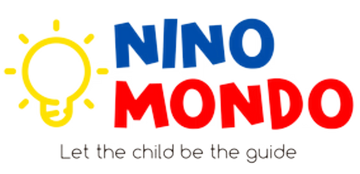
Everything You Need to Know About the Transporting Schema
Picture this: your child is busy moving toys from one side of the room to the other, filling up a bag or bucket, and then emptying it out somewhere else. What may look like simple back-and-forth play is actually an exploration of how objects can be moved, carried, and transported. This is all part of their natural development, and it’s known as the transporting schema!
What is the Transporting Schema?
The Transporting Schema is all about movement—how things are carried, moved, and transported from one place to another. This process can include filling containers, carrying items, and transferring objects between different locations. Through this exploration, children develop a sense of organization, understand cause and effect, and build foundational skills in problem-solving and coordination.
When Does the Transporting Schema Occur?
The transporting schema often emerges in children between 18 months and 3 years old but can start as early as 12 months. At this stage, children are naturally curious and are eager to engage in repetitive actions, like filling and emptying containers or moving items in their hands, which helps them make sense of their environment.
3 Transporting Schemas
You might notice your child displaying the transporting schema through various behaviours, such as:
- Carrying Objects: Children may enjoy moving items from one place to another, using their hands or pushing them in toy carts. This behaviour helps them understand weight, distance, and effort.
- Filling and Emptying: Kids often fill containers, bags, or buckets with toys, sand, or other objects, and then empty them out again. This helps them learn about volume and capacity.
- Transferring: Children may transfer objects from one hand to another, or from one container to another, to explore how items can move and change positions.
Skills Developed Through the Transporting Schema
Engaging with the transporting schema helps children develop several important skills, including:
- Gross Motor Skills: Moving objects around strengthens the muscles in their arms, shoulders, and torso, and improves balance and coordination.
- Spatial Awareness: Transporting objects allows children to learn about distance, space, and how to navigate obstacles.
- Problem-Solving Skills: As children figure out how to carry or move objects, they develop critical thinking and reasoning abilities.
- Understanding Cause and Effect: Repeated actions like filling and emptying containers help children understand the consequences of their movements.
Montessori Activities to Support the Transporting Schema
Here are some Montessori-inspired activities that can encourage the transporting schema in your child:
- Toy Cart or Wagon Play: Provide a toy cart or wagon for your child to load with items and move around the room, which helps them understand weight and balance.
- Pouring Activities: Set up activities with sand, water, or beans that your child can pour from one container to another, developing fine motor control and concentration.
- Basket Carrying: Give your child a basket and encourage them to collect toys, stones, or leaves, then transport them to a different spot.
- Treasure Hunts: Organize a scavenger hunt where your child finds and gathers objects to bring back to a "home base," promoting coordination and focus.
- Scooping Games: Use scoops and small containers for your child to practice transferring materials like rice or pasta, improving their dexterity and precision.
List of Words to Support the Transporting Schema
Move, Carry, Fill, Empty, Load, Unload, Transfer, Transport, Gather, Collect, Distribute
Communicating the Understanding of the Transporting Schema Through Language
When engaging with your child during these activities, use encouraging phrases that reinforce their exploration of transporting. Here are some examples:
- “Great job carrying all those toys across the room!”
- “What can you put in your basket next?”
- “Let’s see how many stones you can gather and bring back!”
- “Can you transport the water from one cup to another without spilling?”
Here are a few examples of using specific words to help them connect their actions with the outcomes, enhancing their understanding of the transporting schema:
- Move: “Can you move the blocks from this side to the other?”
- Carry: “Let’s carry the books to the bookshelf.”
- Fill: “Fill the bucket with toys and see how many fit!”
- Empty: “Empty the sand from the pail onto the tray.”
- Load: “Load the cart with your stuffed animals.”
- Unload: “Unload the blocks from the wagon.”
- Transfer: “Transfer the beans from one bowl to another.”
- Gather: “Gather the leaves into the bag.”
- Collect: “Collect all the balls and put them in the basket.”
- Distribute: “Distribute the toys to different corners of the room.”
For more activity ideas to support your child’s schemas, check out our Play Schema Cards!

